GRP Flat Table Boatbuilding 10
Solid Glass Laminate
Although this has been about foam sandwich construction it is possible to make flat-table laminates without the foam, just the glass. It is not necessary to bag the laminate to the table, but it can be bagged if required.
This was mentioned in the concluding section of Chapter 9.
Bagging a glass-only laminate
- A stronger, lighter laminate can be produced by using certain additional materials.
- Bagging a laminate will squeeze out surplus resin, so this will reduce weight.
- Bagging will consolidate the laminate, thus increasing its strength.
To avoid the resin contacting the vacuum bag a layer of cloth, usually nylon, is laid across the upper layer of wet glass. It is called Peel Ply. Above it is a layer of absorbent ‘fleece’ to soak up any surplus resin and to protect the vacuum bag. The materials for this can be purchased from the same supplier of the resin/glass materials.
Why make a glass only laminate?
To build a boat some panels that can be flexed and curved will be needed. Solid glass panels can do this easily. A flat panel boat will be a combination of sandwich and solid panels. Derek Kelsall (See Chapter 2) went on to develop other shapes, especially rounded sections. Using large diameter drainage, plastic pipes as moulds, curved forms can be fabricated. Such shapes can be used to make rounded joints between deck and hull instead of the sharper shape naturally produced with total flat panels.
It is possible to mould two foam sandwich sections with a thin solid-glass section linking them. When removed from the table and still ‘green’ such a construction can be flexed to provide a curved link between the two flat panels. The more that the system is used, the greater the realisation of the possibilities. The method encourages innovation in the user. The boats that I made were a 35ft offshore cruiser and a 25ft estuary cruiser. The first was a traditional-build foam-sandwich craft and the second was a flat-table, foam-sandwich boat. Taking just a single example of construction from the second craft, this was the method of construction 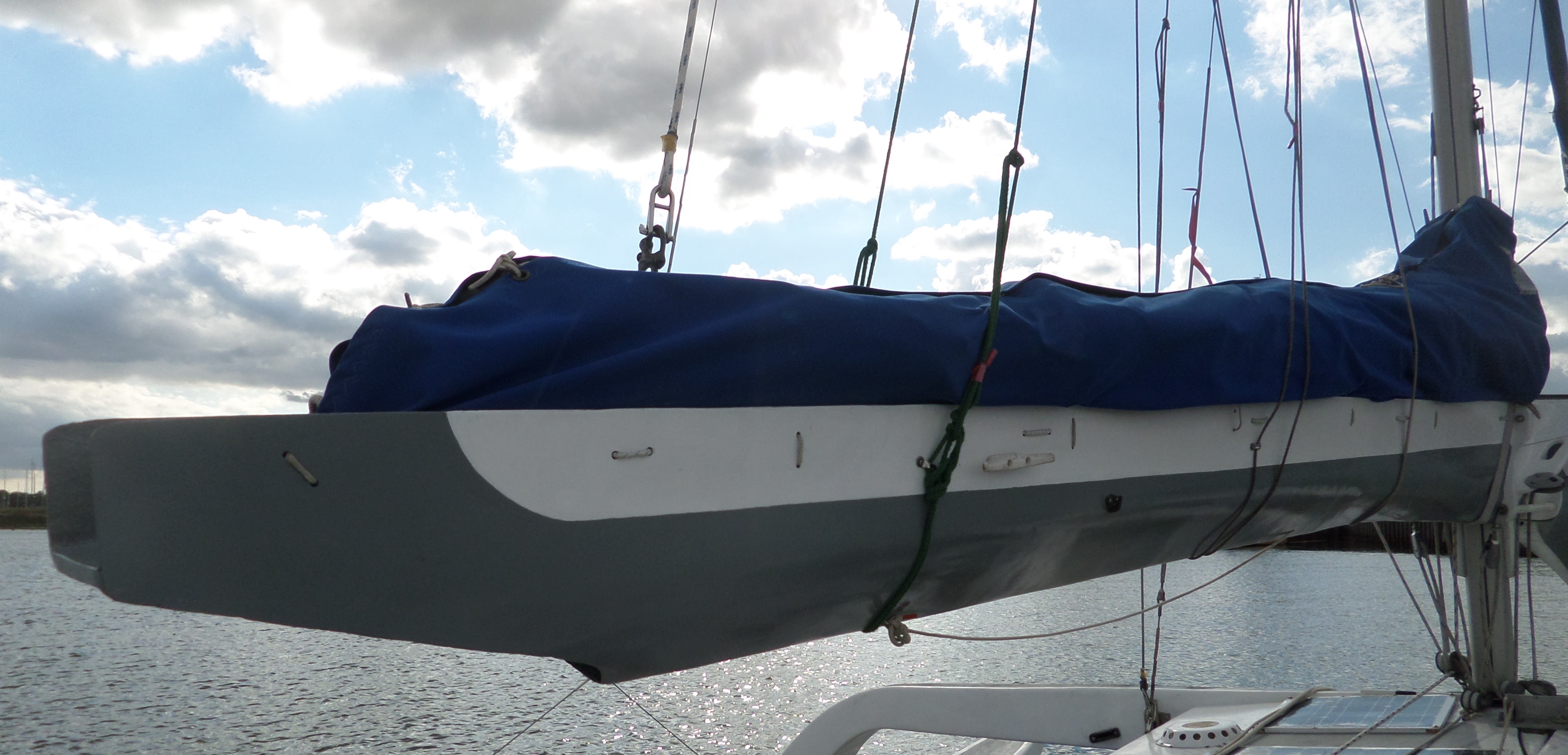
Right. Back of Boom Curved Sides - Solid glass
Solid glass structure Flat Horizontal web - Sandwich
Some structures do not need to be ‘sandwiched’. On a day-sailing sport catamaran, or in the outrigger floats of a trimaran which use curving forms and smaller, tight shapes, the hulls can be made sufficiently strong as solid-glass laminates. The additional advantages such as hull insulation are not required. In this respect they are similar to the boom. The solid glass panels can be ‘tortured’ into shape and bonded. The form supplies the 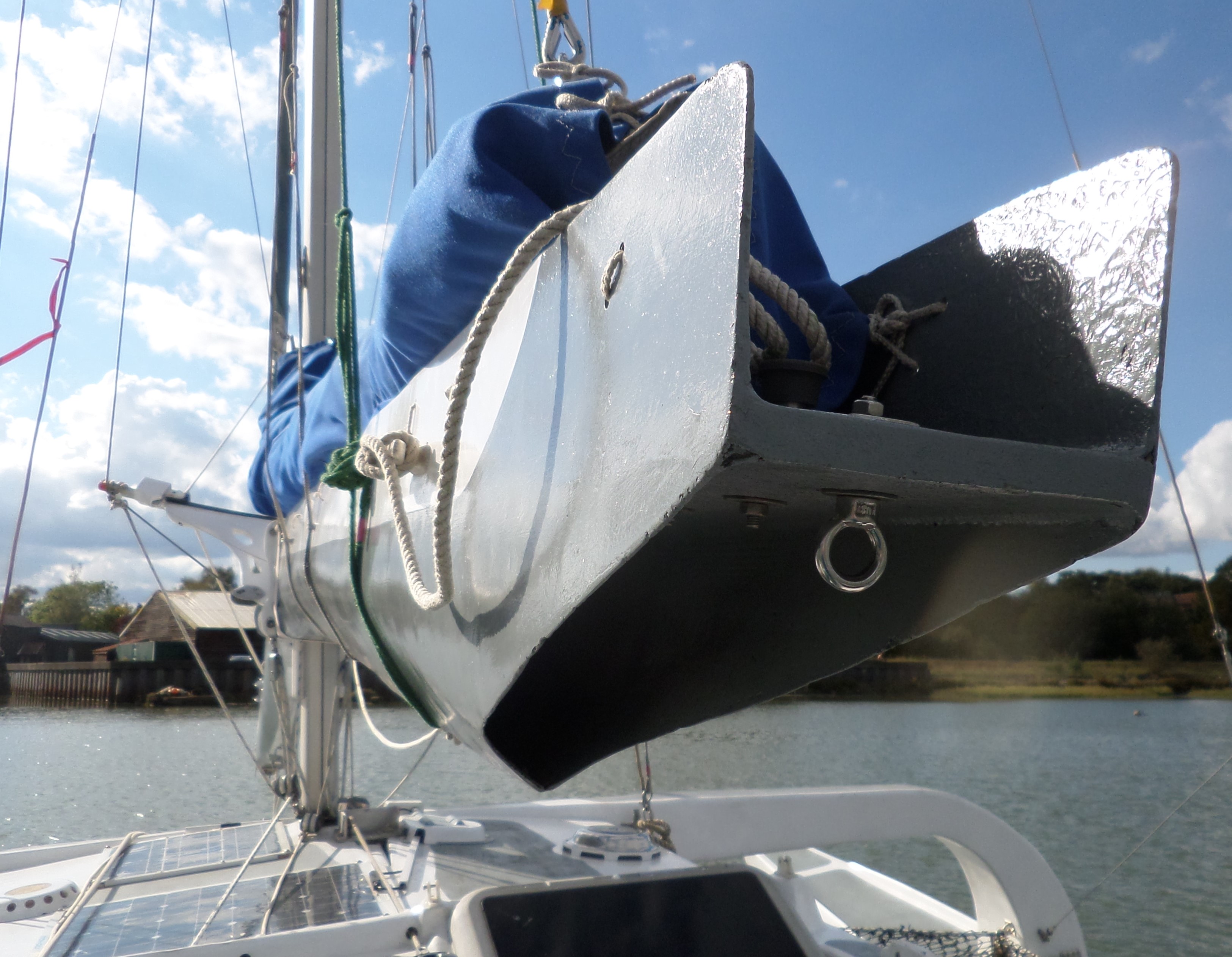
The boom
The shape of the boom was an inverted ‘A’
The two sides of the boom were laid up as solid glass on the table with no gel coat.
The horizontal spreader was foam sandwich
Jib boom below. The exposed edges of two upper projecting arms were further stiffened using glass wrapped around pipe formers, similar to the paper-rope formers used in early constructions (Chapter 2).
The open upper section was used for sail stowage by the addition of fabric sides. The stiffness of the boom was delivered by 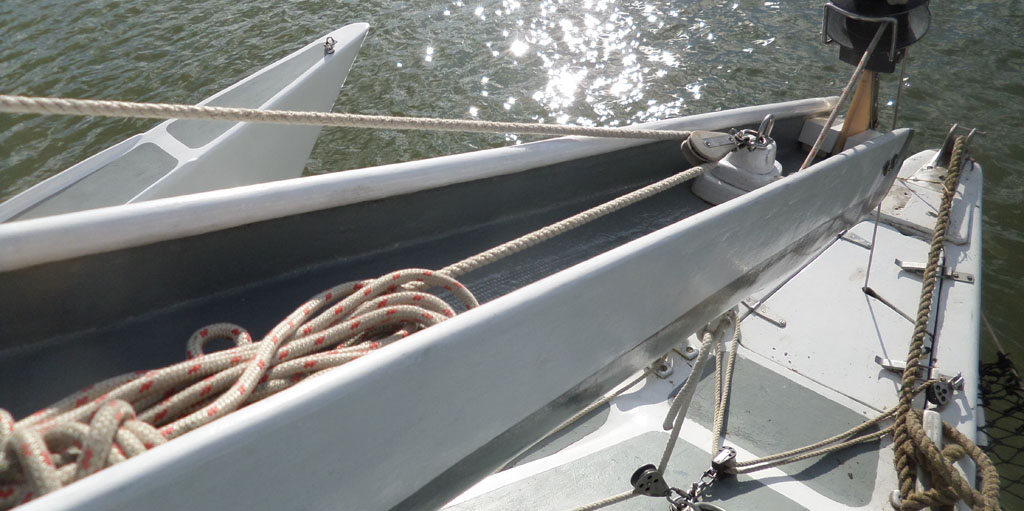
The construction of this estuary cruiser will form the basis of further information to be posted on this website to illustrate the practicalities of the many different aspects of flat-table construction.
Second boom. Stiffened top edge
Finally
Here are a couple of boats built with exactly the methods that have just been described. Built by amateurs in their back gardens. Wakey-Wakey is a 32ft catamaran and Moonbeams is a demountable, 25ft estuary-cruising trimaran. This trimaran will be the subject of a follow-on series detailing how it was constructed and including a number of experimental details and systems incorporated into its build. These craft continue to be used and both are over 30 years old, proving the durability and success of the system. Wakey-Wakey & Moonbeams
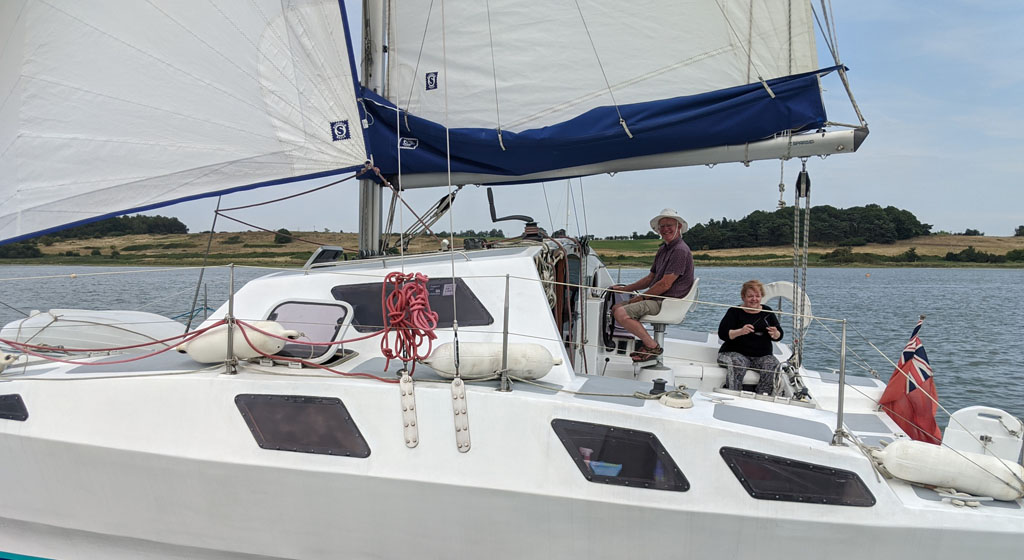
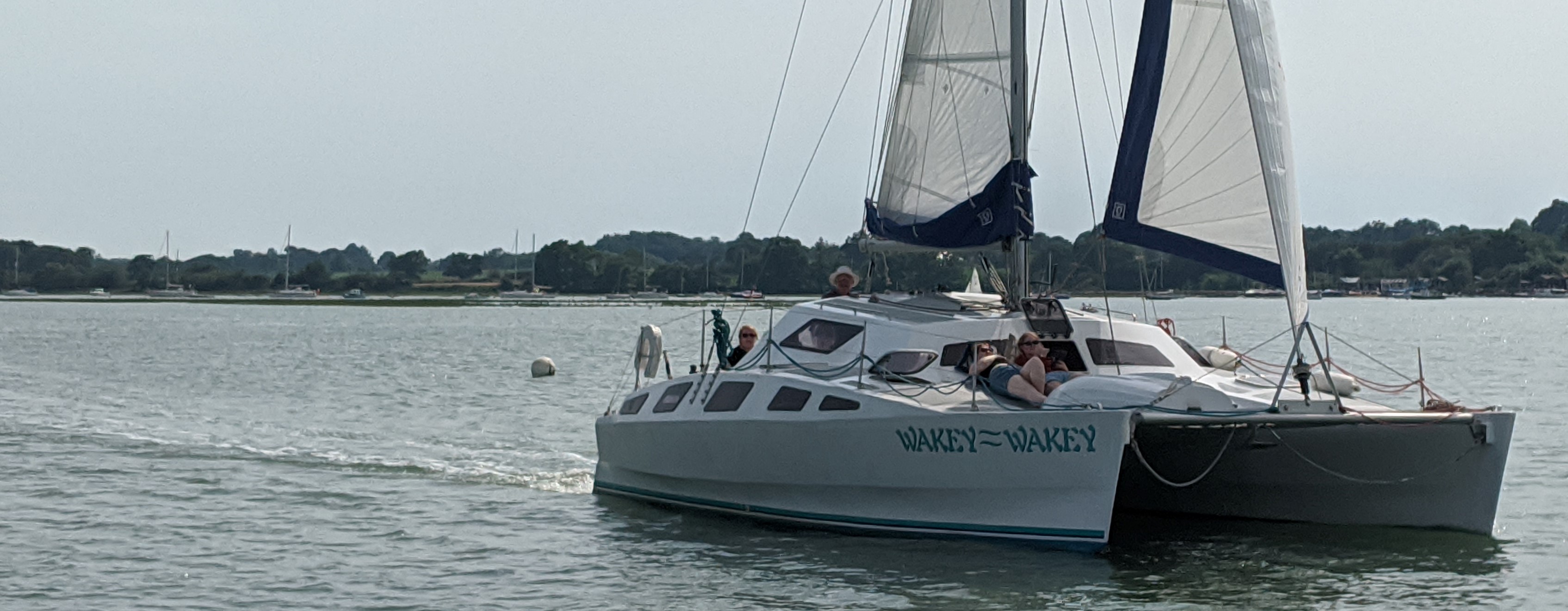

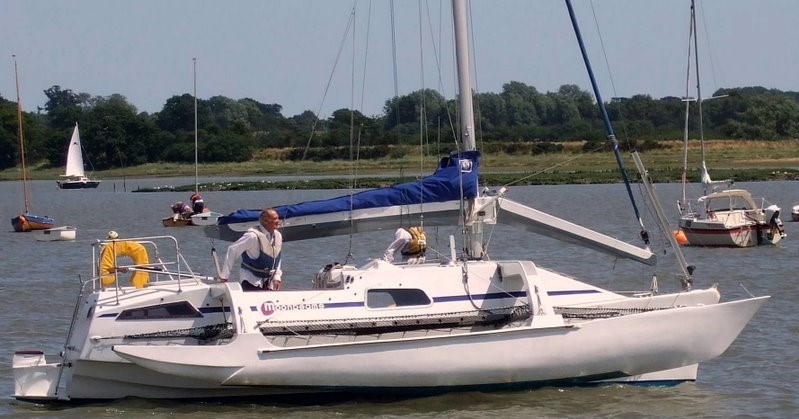
Some Websites
Easy Composites (Britain, USA, Canada) easycomposites.co.uk
All the materials needed for vacuum bagging, resins and cloths and how-to-do-it videos.
You do not have to use everything that they offer, but you will be much better informed if you study their information. Derek Kelsall advocated that polyester resin is perfectly OK for normal constructions and other resins are not essential. The methods described on the website videos are state-of-the-art and it is not necessary to jump into the deep end for the first trial. In Chapter 3 I advised learning all that can be gleaned from websites, but then, possibly use a local supplier and seek advice from them.
Derek Kelsall Kelsall.com
History of many varied craft, designs, kits, How to do it.
It should be remembered that Derek Kelsall has many years of experience and has constantly evolved the flat-table systems. The methods he describes are more sophisticated than the basic one that I have outlined. They will have been refined over the years. It should also be remembered that it is possible to fabricate a complete craft using no more than I have described. It is simple and can be trialled using equipment almost little more than you might possess already. When you understand how easy it is, then you might begin to consider some of the more advanced operations that Derek describes. I learned what I know from him and now I pass it on to you. 2021 is the 45th anniversary of Toria winning the 1966 Round Britain Race. Derek died 2 January 2023.